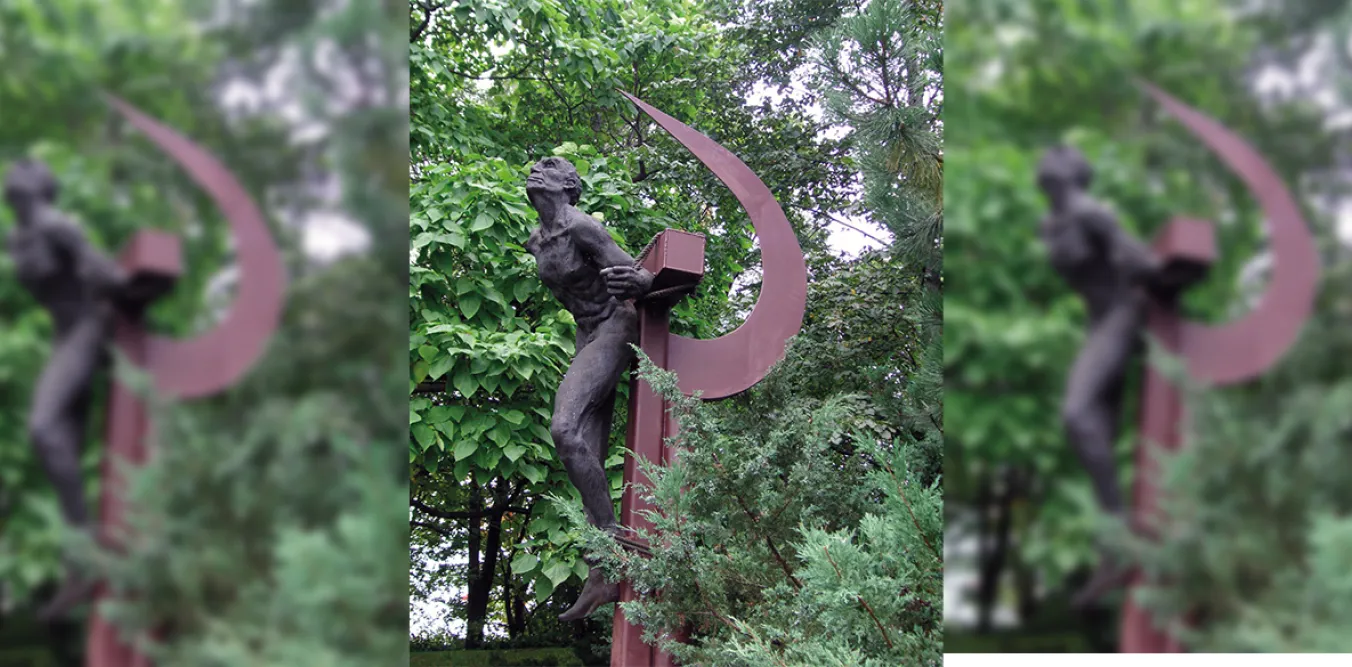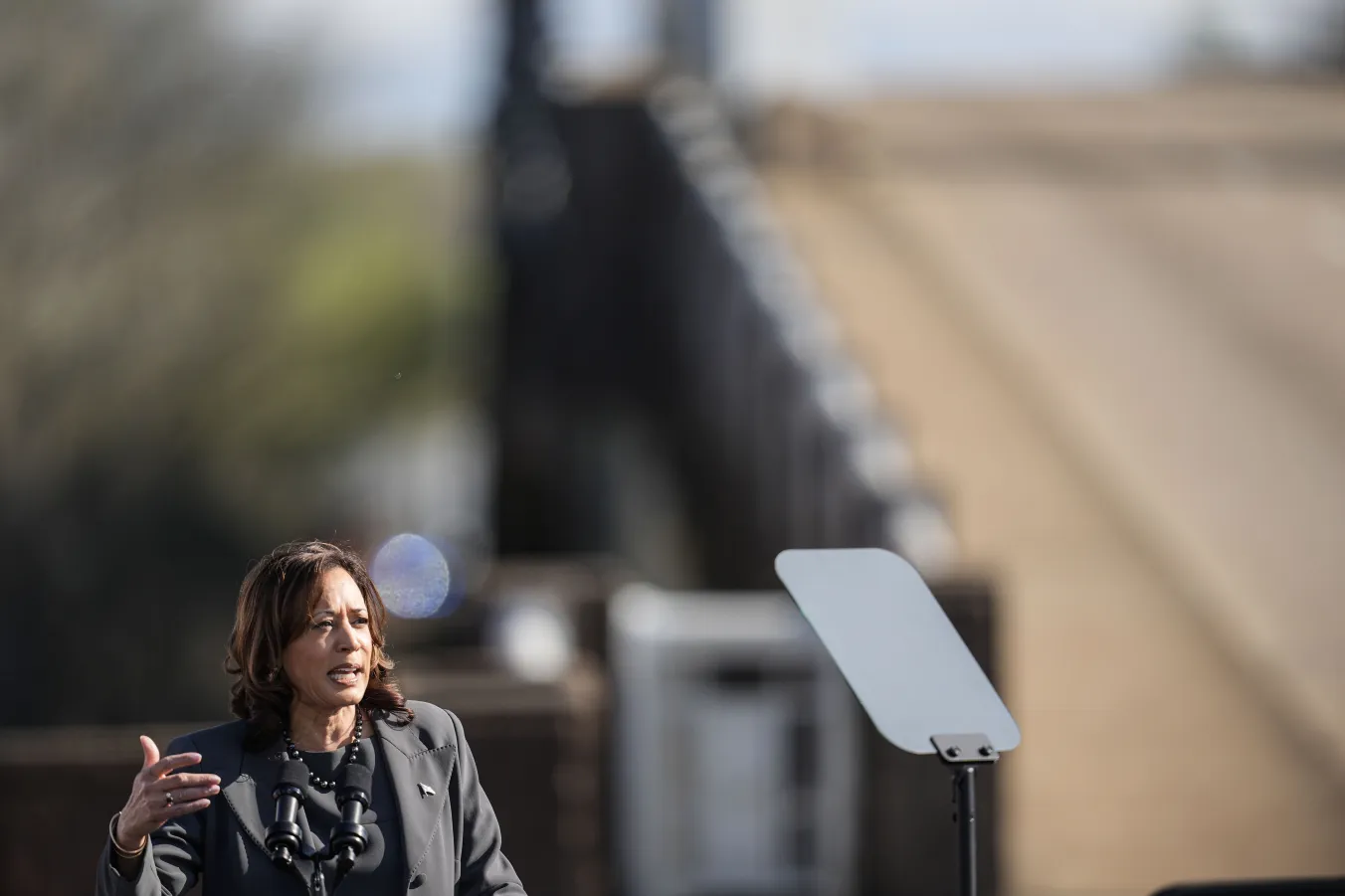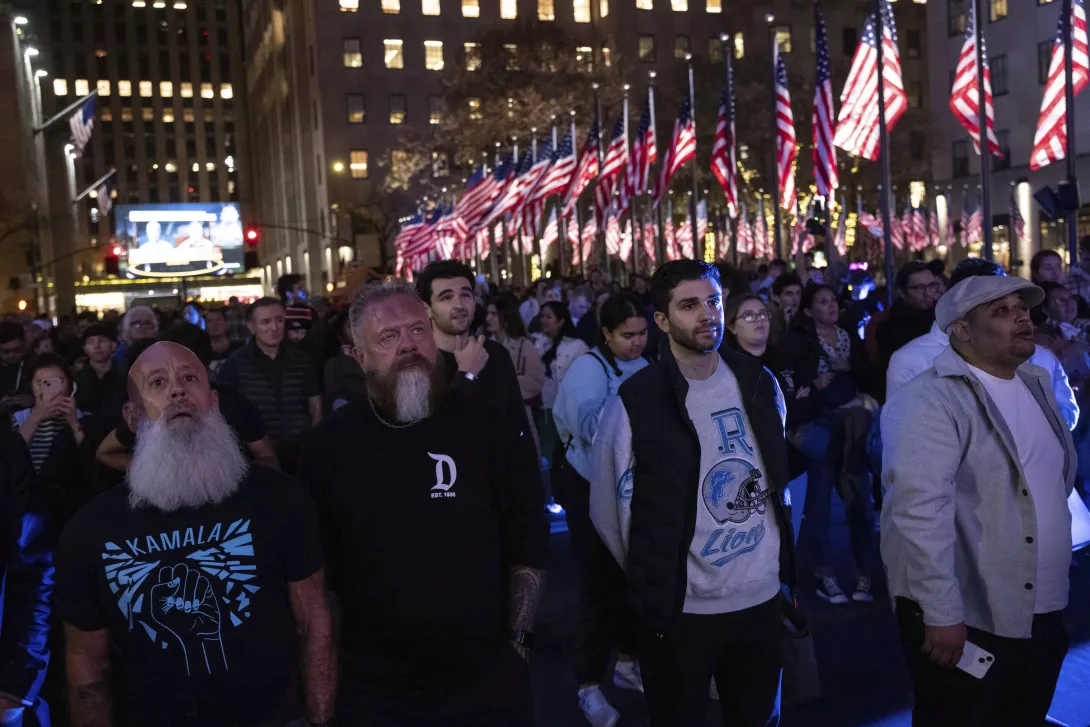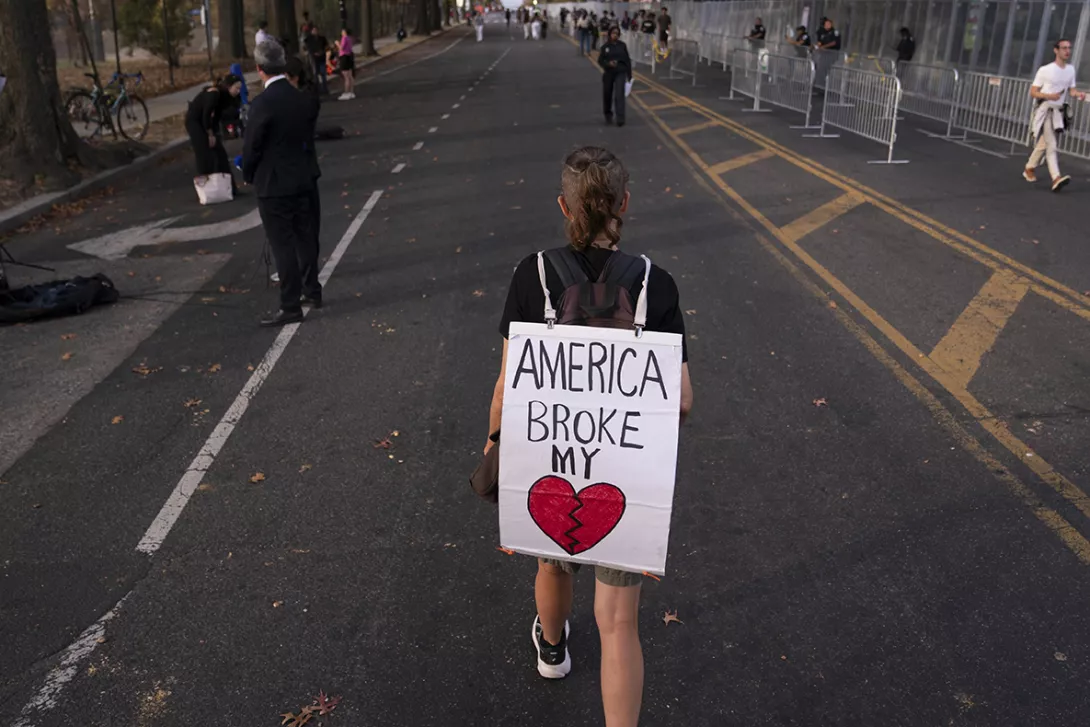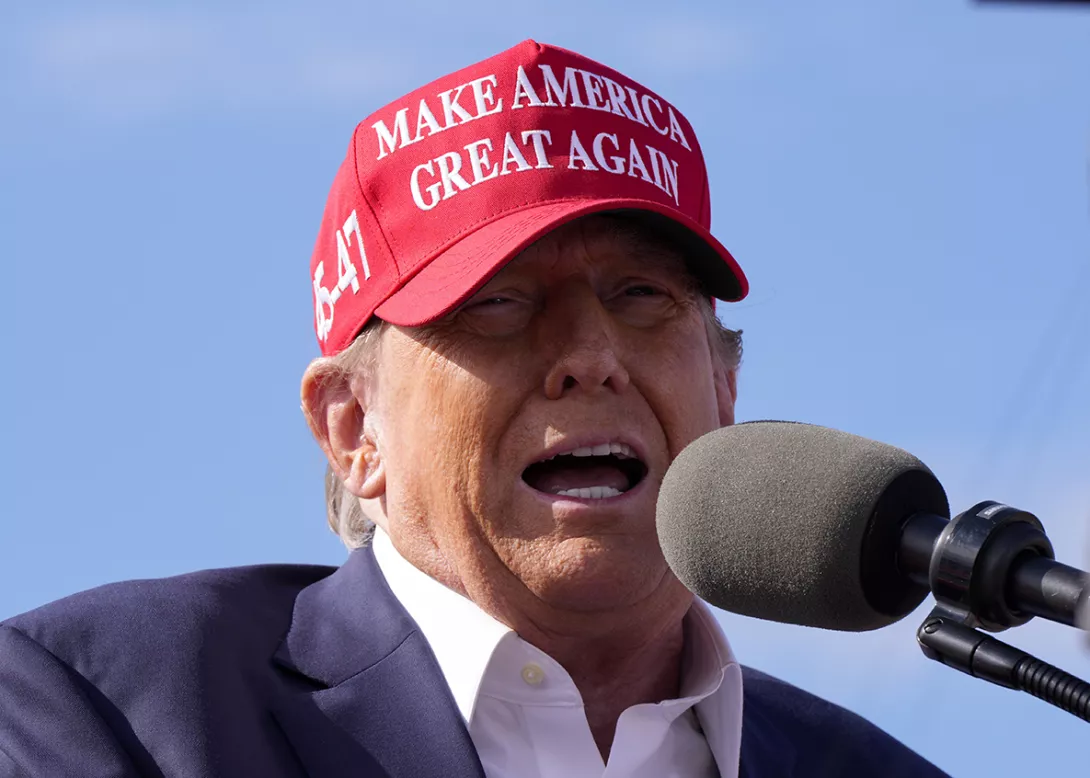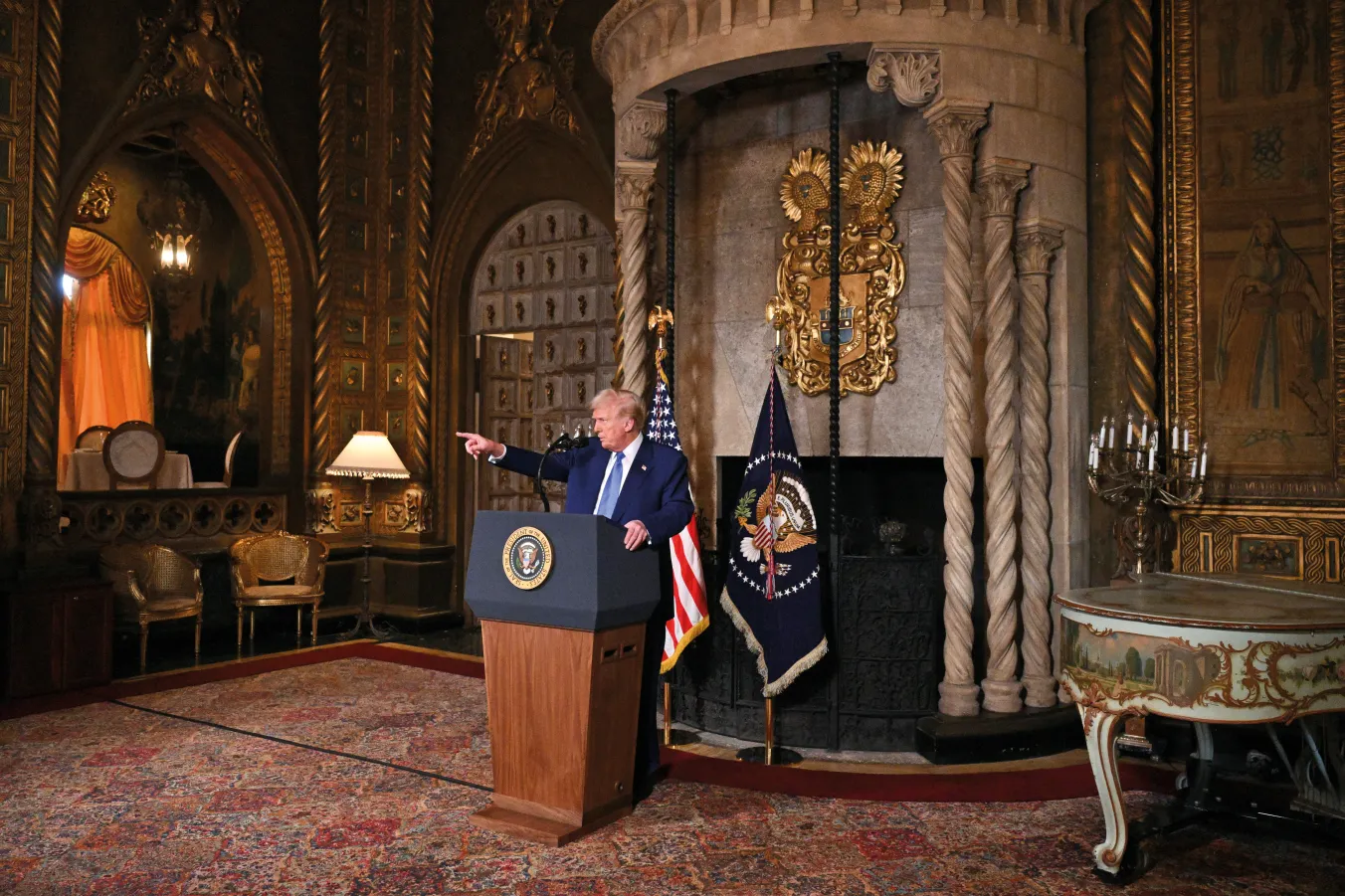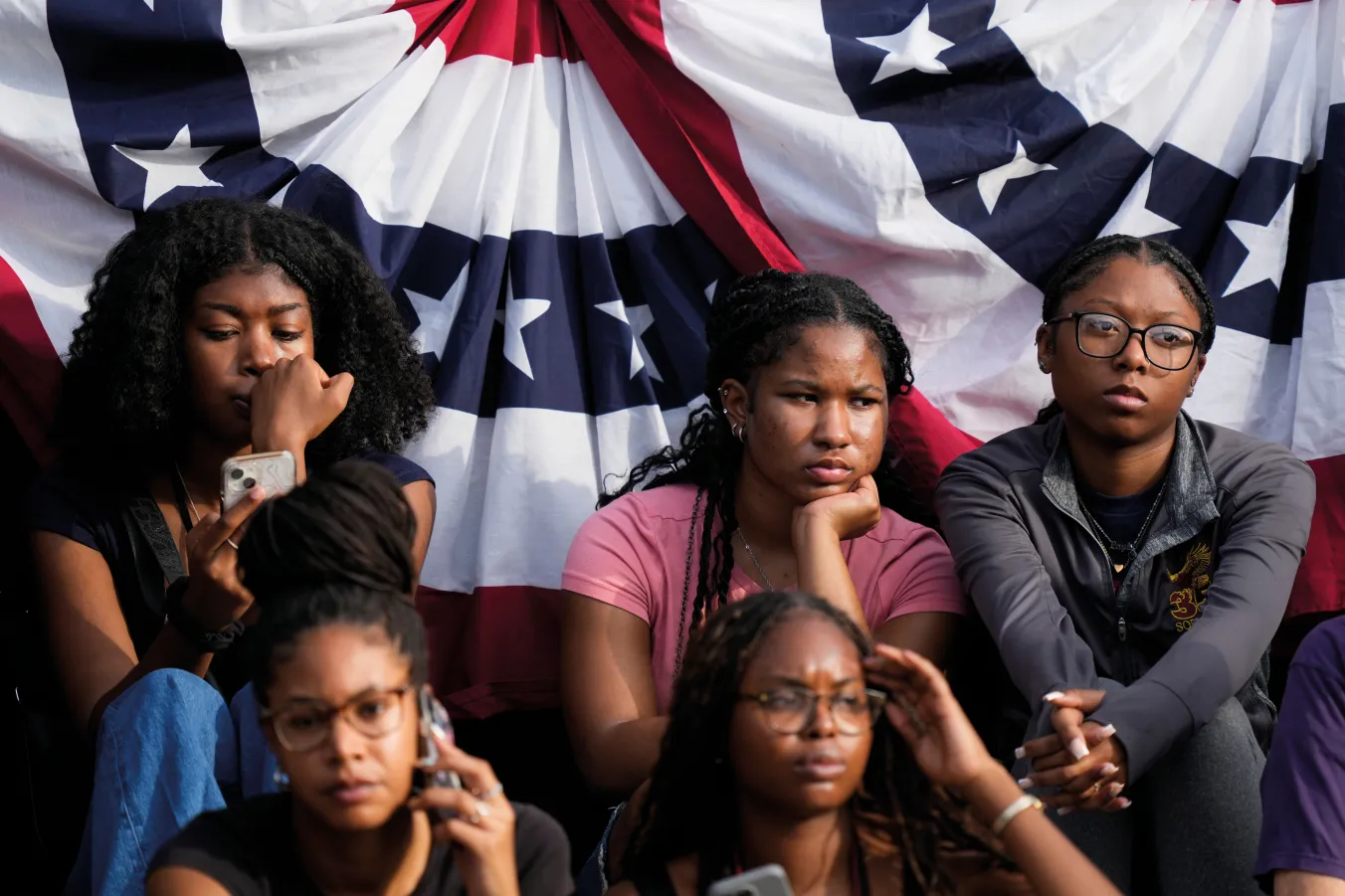
IT’S the morning after, and all the pundits in the corporate media are pitching their explanations for what happened. There will be an endless number of hot takes, and political spin stories proffered in the coming days.
The headlines scream: Trump trounced Harris, and a “red wave” retook the Senate. The fast and easy conclusion that some are pushing is that the country as a whole has turned to the right and that the Democrats’ supposed catering to progressives and minorities was rejected by most Americans.
But is that really what we just witnessed? The broad anti-Maga coalition has won every national election since 2018; so did the motivations and sentiments that helped build those victories simply evaporate?
Were right-wing victories in past elections — like Reagan or Bush I or Bush II — signals of a mass ideological realignment toward a reactionary outlook on the part of the US people? Or, like in those elections, was something else going on this time?
The truth is it’s going to take a while to dig into the results and put together the full picture. We need to keep in mind that scientific analysis takes time, and not everything is as obvious as it might at first appear. As Karl Marx said: “All science would be superfluous if the outward appearance and the essence of things directly coincided.”
Marxists — the real ones, not the phantom ones Trump alleges are plotting to take over the country — always try to avoid being taken in by appearance or detached idealism, which the ruling class uses to hide or distort the real essence of things.
In the coming weeks and months, as the anti-fascist forces regroup, there will be a lot of thinking and critiquing to do as we craft our strategies and tactics for the period ahead. It might be too early to draw any hard and fast conclusions, but there are a few things we can say with a reasonable degree of confidence.
The US is entering a period of intensified class struggle
Trump and the Maga faction of the Republican Party are the vehicle for the country’s most right-wing capitalists. Collectively, anti-worker corporations, predatory hedge funds, and finance capital spent hundreds of millions to elect him and a GOP Senate. The names are familiar ones: Susquehanna Group, Koch Industries, Blackstone, Walmart, TD Ameritrade, Wynn Resorts, Home Depot, Energy Transfer Partners, Sequoia Capital, Johnson and Johnson, and more.
They put their guy back in the White House, and their paid politicians will be running Congress. Don’t think they won’t take full advantage of the opportunities that brings.
And worse, unlike when he won in 2016, Trump won’t be winging it this time. He will enter the White House in January with a fully worked out billionaires’ agenda — Project 2025 — which targets the working class and unions, people of colour, immigrants, women, LGBTQ people, Medicare, Social Security, Medicaid, climate change legislation, and more. Expect major tax cuts for the rich and public service cuts for the rest of us.
Further, it’s worth noting that there were major contradictions in voting patterns this time, which also foreshadow a sharpening of class division. Wherever they were on the ballot, abortion amendments, for instance, got majority support. Only in Florida, where anti-democratic rules require a high majority, did a pro-abortion referendum fail.
Such seemingly contradictory outcomes suggest we are in a time of both political and ideological conflict, a battle of economics and ideas.
Many people stayed home
We’ll need to look at a number of questions if we really want to analyse this election from a class perspective: Who voted and how? Why did they vote like they did? Who didn’t vote, and why not?
The corporate press and its commentators are spitting out all kinds of statements aimed at splitting the working class. They say Latinos didn’t turn out, too many black men went over to Trump, women voted against abortion bans but also cast ballots for Trump, and Arab-Americans were too single-minded when it came to Gaza.
Early data suggest that some of these talking points are just that: talk. They’re all variations of a blame-the-voter mindset and are no substitute for material analysis. There’s still a lot of parsing to do.
The most solid data point we have right now is that turnout overall is probably down from 2020 — for both parties. Turnout last time was over 155 million people; this time, it may not even hit 140 million.
Trump is on track to be about two million votes below his losing total in the last election. The big gap, though, comes on the Democratic side. It appears Harris may end up 13 to 14 million votes below the total Biden racked up in 2020. Even in the blue states, the Democratic tally was significantly down, in some states by double digits.
But with Trump also down, the evidence for a massive swing to the right on the part of voters starts to look thin. Instead, millions of people who voted last time may have stayed home in 2024. We need to find out why.
Under neoliberal capitalism, the fracturing of our society and the alienation of people from one another has escalated rapidly. By design, the system is pulling us apart from one another, whether on the job or in social life. This has produced an increased detachment from parties and other institutions. We need to take a closer look at these phenomena.
The election may have been lost at the grocery store and the gas station
Democratic consultants, insider strategists, and liberal ideologues are working hard to convince us that they weren’t the problem and that they ran a perfect campaign. But if we listen to what they’re saying, we may miss the biggest class struggle lessons of this election.
Radio host Michelangelo Signorile, for example, posted on X just after midnight: “This isn’t about a bad campaign or candidate. It is about half of voters liking or overlooking Trump’s hate, misogyny, racism, [and] cruelty.”
Before the final numbers came in, MSNBC columnist Michael A Cohen wrote, “If Harris loses, there will be a lot of recriminations directed at her, but it’s hard to point to any glaring mistakes she made. She ran an excellent campaign.”
USA Today opinion writer Michael J Stern issued the following reprimand: “These pundits need to stop saying that Democrats need to sell their policies better to working-class voters. Democrats have done that. People voting for Trump want to indulge their bigotry and hatred, and Trump allows them to do that.”
So, the conclusion from all these people seems to be that voters are just too racist and sexist, end of story. After observing Trump for all these years, after Charlottesville, after Madison Square Garden, the poisonous role of white supremacy and misogyny in mobilising a major segment of Trump voters is obvious, but are those the only factors at work?
These have long been tools used by the ruling class to divide the working class, and Trump has mastered their use like few before him. But what are the material conditions of life that make people susceptible to this kind of messaging or lead them to conclude that other concerns outrank any worries they might have about Trump’s bigotry?
When it comes to the economy, to take the glaring example, there wasn’t a whole lot for working-class and poor people to get that excited about in this campaign.
Trump offered his well-worn plan, which is tax cuts for billionaires and the false promise of creating jobs via a trade war against China. But his main strategy was simply repeating endlessly the claim that the economy is bad — something that many working people would be hard-pressed to deny.
The central Democratic campaign, controlled by the party’s corporate faction, was exceedingly thin on economics, opting not to talk too much about an issue for which most polls gave the edge to Trump. The central aspects of Harris’s economic platform were the $6,000 child tax credit and the promise of up to $25,000 in down payment assistance for buying a home.
Both were positive proposals, as far as they go, but they hardly constituted a real economic “plan” at a time when millions are struggling with stagnant wages, slow job growth, and inflation.
Add in the fact that the Democratic platform pushed policies like cutting the capital gains tax rate and a pledge to keep corporate taxes lower than they were pre-Trump, and there wasn’t a lot to work with if you wanted to assemble a working-class economic programme.
Neglecting to talk more about the role of corporate price-gouging in driving high prices was a missed opportunity, and bragging about how big banks like Goldman Sachs or Wall Street billionaires like Mark Cuban positively assessed the Democratic plan didn’t amount to ringing endorsements in the eyes of workers.
People confront the reality of inflation multiple times a week, every time they go to buy groceries or fill up their tank. Messages about inflation “coming down” or a “growing economy” didn’t mesh with what many were feeling.
Trump, by contrast, said there’s something wrong with the country economically. He might have given all the wrong prescriptions for how to deal with that, but just acknowledging things weren’t right could have been enough to motivate many voters.
We might do well to listen to movement leaders like International Union of Painters and Allied Trades president Jimmy Williams, who said the morning after Election Day that the Democratic Party “did not make a positive case for why workers should vote for them, only that they were not Donald Trump.”
People are tired of war
Early exit polls suggest that the generic category of “foreign policy” was not high on the minds of many voters, but US imperialism’s current wars were certainly a factor in this election. People of all political persuasions are tired of war, although that manifests in different ways.
Interviews of many Trump voters conducted by a range of media outlets both on election day and over the past few weeks revealed a sense that the world is falling apart and that the Biden administration’s confrontation with Russia in Ukraine could lead to nuclear war.
No doubt they are influenced by right-wing messaging and the isolationist facade that Trump pushes, but a lot of people are unconvinced about the necessity of shoring up Nato in eastern Europe — a case that peace activists have been trying to make for years.
On the other side, as many progressives warned ahead of the election, Gaza was a consequential issue for the Democrats, especially in key Arab-US precincts in Michigan and perhaps on many college campuses.
Contrary to what the talking heads are saying, this was not so much a case of these voters abandoning the Democratic Party but rather of them feeling abandoned by a president who consistently chose to keep funding genocide in Palestine and disheartened by a Democratic nominee who signalled not much would change under her.
Fascism wins by appealing to real demands, not only hatred and fear
The most reactionary and far-right sectors of the capitalist class have teamed up to back a wannabe dictator who’s managed to assemble a mass movement of contradictory forces behind him — outright racists and misogynists along with millions of disaffected and confused members of the working class. It’s the classic formula for fascism.
But beyond the race hatred, the anti-immigrant hostility, the misogyny, and the homophobic and transphobic attacks, what else motivates significant blocs of voters to go over to the fascist side?
Georgi Dimitrov, one of the famed anti-fascist leaders of the 1930s, provided the beginnings of an answer:
“What is the source of the influence of fascism over the masses? Fascism is able to attract the masses because it demagogically appeals to their most urgent needs and demands. Fascism not only inflames prejudices that are deeply ingrained in the masses, but also plays upon the better sentiments of the masses, on their sense of justice and sometimes even on their revolutionary traditions. Fascism aims at the most unbridled exploitation of the masses but it approaches them with the most artful anti-capitalist demagogy, taking advantage of the deep hatred of the working people against the plundering bourgeoisie, the banks, the trusts, and financial magnates.”
Trump has spent years portraying himself as a champion of those left out of the post-industrial economy, as a voice for workers who saw their jobs outsourced and their communities devastated.
